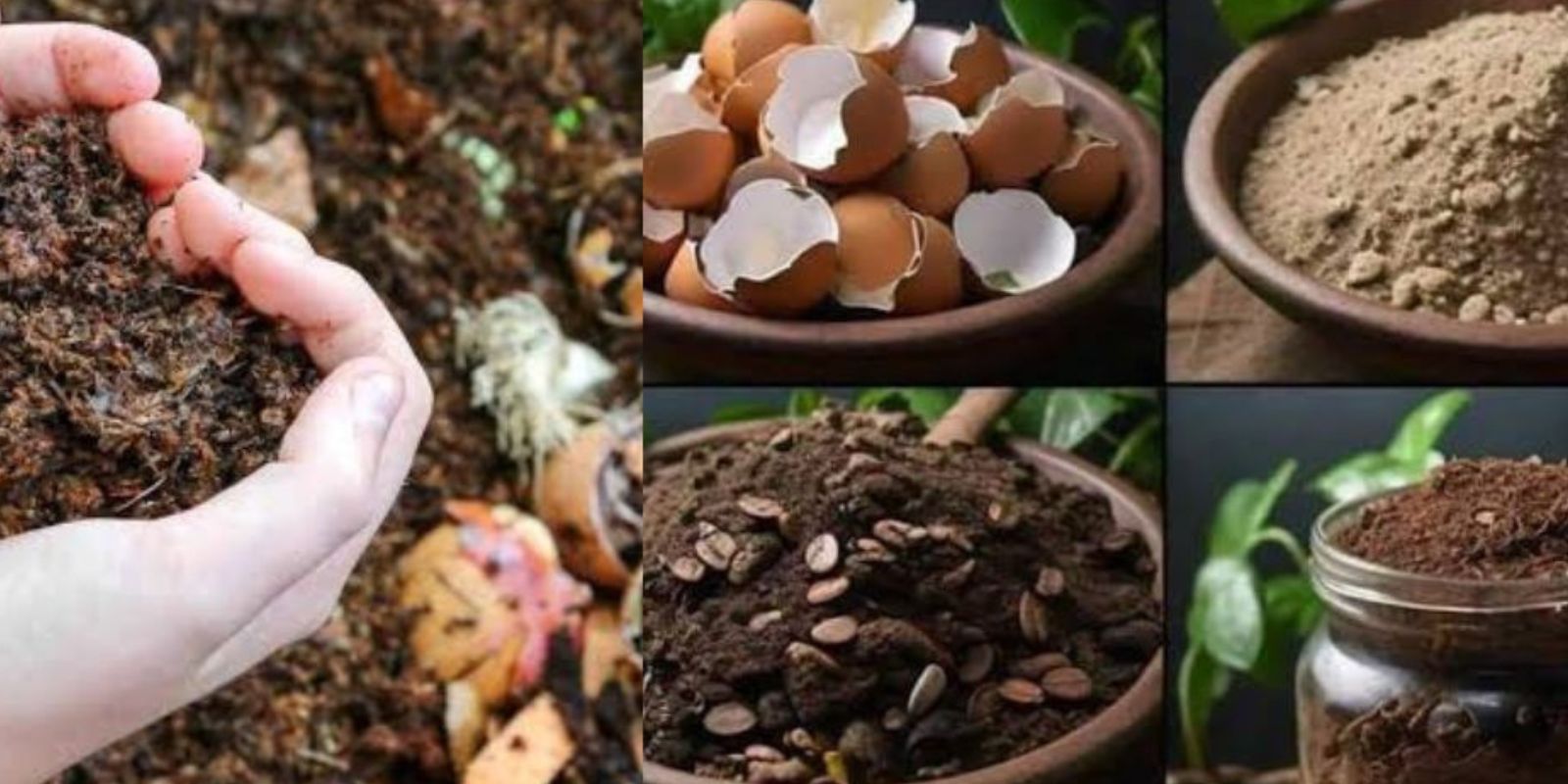Gardening enthusiasts are always looking for ways to improve plant health while keeping costs low and reducing environmental impact. One of the most effective ways to achieve this is by using natural fertilizers made from everyday household items. These simple, eco-friendly methods not only enrich your soil but also contribute to healthier, more vibrant plants. From rusty nails to coffee grounds, this guide will teach you how to create and use five powerful DIY fertilizers for your garden.
1. Rusty Nails: Iron-Enriched Elixir for Plants
Iron is a crucial micronutrient that plants need to grow strong and green. Instead of buying iron supplements for your plants, rusty nails can serve as a natural alternative.
- How to Prepare:
Place a few rusty nails into a PET bottle filled with water. Allow the nails to sit in the water for a few days until the liquid turns a dark brown color, indicating that the iron has dissolved into the water. - How to Use:
Lightly water the soil of your plants with this iron-rich solution twice a month. The added iron promotes photosynthesis, leading to greener and healthier plants. - Bonus Tip for Aquatic Plants:
If you have an aquarium with aquatic plants, bury old, dull nails in the substrate. Over time, the nails will release iron, which is essential for maintaining the vibrant growth of underwater greenery.
2. Eggshell Compost: The Calcium Booster
Calcium is another vital nutrient for plants, as it strengthens cell walls and supports overall growth. Eggshells are an excellent natural source of calcium and can easily be incorporated into your soil.
- How to Prepare:
Collect used eggshells, rinse them thoroughly, and let them dry. Once dried, crush the shells into a fine powder using a mortar and pestle or a blender. - How to Use:
Mix the eggshell powder into your garden soil or potting mix. The calcium from the eggshells will slowly release into the soil, helping your plants grow stronger and more resilient. - Plants That Benefit Most:
Tomatoes, peppers, and other fruiting plants prone to calcium deficiency will thrive with this method.
3. Tea Bags: A Tannic Treasure for Roses and Geraniums
Used tea bags are rich in nutrients, including tannins, which improve soil acidity and provide a gentle source of nitrogen for plants.
- How to Prepare:
After brewing tea, remove the natural tea bag (avoid synthetic varieties) and let it cool. - How to Use:
Bury the tea bag directly into the soil near the roots of your plants. As the tea bag decomposes, it will release nutrients into the soil, nourishing your plants. - Best Plants for This Fertilizer:
Roses, geraniums, and other flowering plants thrive on the nutrients released by tea bags, resulting in more vibrant blooms.
4. Coffee Grounds: Nutrient-Rich Soil Conditioner
Coffee grounds are an incredible source of nitrogen, potassium, and phosphorus, three essential nutrients for plant growth. They also improve soil texture and attract earthworms, which further enhance soil health.
- How to Prepare:
Collect used coffee grounds and allow them to dry. Avoid using coffee grounds that are heavily flavored or sweetened. - How to Use:
Sprinkle the dried coffee grounds on the surface of your soil or mix them into your compost pile. Over time, the nutrients will seep into the soil, providing a slow-release fertilizer. - Additional Benefits:
Coffee grounds also repel certain pests like slugs and snails, making them a dual-purpose gardening tool.
5. Rusty Nails in Aquariums: An Aquatic Fertilizer Hack
If you have an aquarium at home, you can use rusty nails to create a slow-release iron source for aquatic plants.
- How to Prepare:
Find old, dull nails and sterilize them before use. Bury them at the bottom of the aquarium substrate. - How It Works:
The nails will gradually release small amounts of iron into the water, promoting healthier aquatic plants. This method is ideal for those who maintain planted aquariums and want to avoid chemical fertilizers.
Why These DIY Fertilizers Work
Plants rely on a balanced diet of macro and micronutrients to grow, thrive, and produce flowers or fruit. Commercial fertilizers often contain synthetic chemicals, which may harm the environment and are costly over time. By using everyday items like rusty nails, eggshells, tea bags, and coffee grounds, you can:
- Provide essential nutrients naturally.
- Improve soil structure and fertility.
- Save money by recycling waste materials.
- Reduce your carbon footprint through sustainable gardening practices.
Tips for Maximizing Success
- Use Moderately: Over-fertilizing, even with natural ingredients, can harm your plants. Follow a schedule, such as applying fertilizers every two weeks.
- Monitor Plant Health: Observe how your plants respond to each fertilizer. Adjust the quantity and frequency based on their needs.
- Combine with Compost: For an added boost, mix these DIY fertilizers into your compost pile to create nutrient-rich soil.
- Test Your Soil: Before starting, test your soil’s pH and nutrient levels to ensure the fertilizers complement the existing conditions.
Conclusion
Fertilizing your plants doesn’t have to be expensive or harmful to the environment. By using household items like rusty nails, eggshells, tea bags, and coffee grounds, you can enrich your soil and promote healthy, vibrant growth naturally. These simple, sustainable methods not only reduce waste but also help you connect with your garden in a more meaningful way.
What’s your favorite natural fertilizer hack? Share your tips and experiences in the comments below! Let’s grow together!

